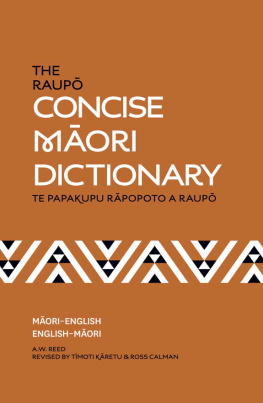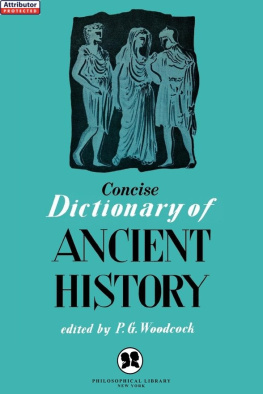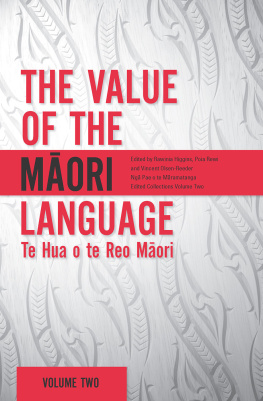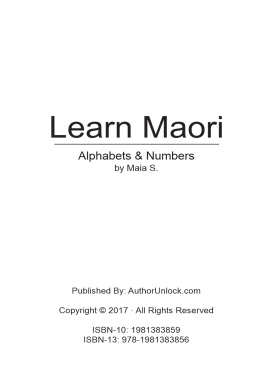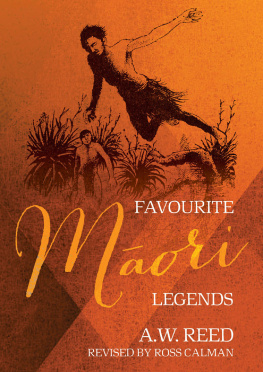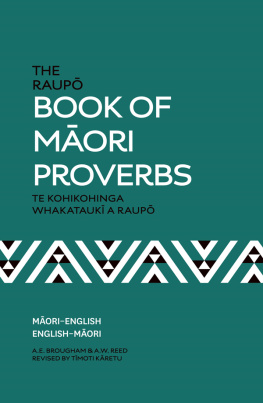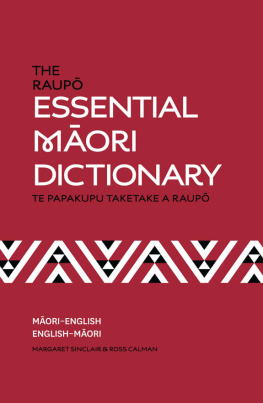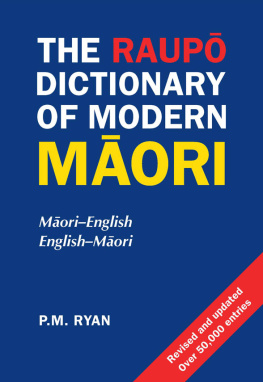Alexander Wyclif Reed - The Raupō concise Māori dictionary
Here you can read online Alexander Wyclif Reed - The Raupō concise Māori dictionary full text of the book (entire story) in english for free. Download pdf and epub, get meaning, cover and reviews about this ebook. year: 2013, publisher: Penguin New Zealand, genre: Detective and thriller. Description of the work, (preface) as well as reviews are available. Best literature library LitArk.com created for fans of good reading and offers a wide selection of genres:
Romance novel
Science fiction
Adventure
Detective
Science
History
Home and family
Prose
Art
Politics
Computer
Non-fiction
Religion
Business
Children
Humor
Choose a favorite category and find really read worthwhile books. Enjoy immersion in the world of imagination, feel the emotions of the characters or learn something new for yourself, make an fascinating discovery.
- Book:The Raupō concise Māori dictionary
- Author:
- Publisher:Penguin New Zealand
- Genre:
- Year:2013
- Rating:3 / 5
- Favourites:Add to favourites
- Your mark:
- 60
- 1
- 2
- 3
- 4
- 5
The Raupō concise Māori dictionary: summary, description and annotation
We offer to read an annotation, description, summary or preface (depends on what the author of the book "The Raupō concise Māori dictionary" wrote himself). If you haven't found the necessary information about the book — write in the comments, we will try to find it.
The Raupō concise Māori dictionary — read online for free the complete book (whole text) full work
Below is the text of the book, divided by pages. System saving the place of the last page read, allows you to conveniently read the book "The Raupō concise Māori dictionary" online for free, without having to search again every time where you left off. Put a bookmark, and you can go to the page where you finished reading at any time.
Font size:
Interval:
Bookmark:

Ngata EnglishMori Dictionary is also recommended as it includes many modern usages absent from earlier dictionaries, is compre hensive, and provides example sentences. As always, the H.W. Williams Dictionary of the Mori Language remains the authority on vowel length and the root meanings of words and is recommended to the serious scholar of the Mori language. In recognition of the preference in Mori for the passive voice, passive terminations are included in this edition. They appear with many common words in the Mori English section of the dictionary, e.g. kite, to see, becomes the passive kitea, to be seen, with the addition of an a; this appears thus: kite(-a).
These are a guide only, as preference for passive endings varies from region to region (see Tmoti Kretus comments in his preface). Transliterations that are established in the Mori lang uage are no longer specifically marked, although in most cases their provenance will be readily apparent. As noted by Tmoti Kretu, a word in Mori can serve many grammatical functions. Where there might be ambiguity, the part of speech is marked by use of the articles the or a, or the preposition to, to indicate whether it is a noun or a verb, e.g. rebel, a tut. rebel, to whana.
Shades of meaning which depend on context are indicated within parentheses, e.g. sentence (grammar) rerenga; (prison) whiu. It is not practicable to include all regional variations but some of the more common ones have been included in this edition, e.g. tahi and tehi, hea and whea. Themed vocabulary lists, which previously appeared in the body of the dictionary, can now be found at the end. The Mori language is a great taonga, bequeathed to our present generations by those who have gone before.
Learning any language takes time and hard work, but ones efforts are rewarded by attaining insights into a unique worldview. My hope is that users of this dictionary will fall under the spell of the language and wish to immerse themselves ever deeper in all its richness and depth. kuikui ai ki te hoka. Persistence pays off. Ross Calmantautahi, 2000
The dictionary does not purport to be the final authority on the language, and the reader should be aware that there are many words not included which are nevertheless used in different tribal areas. Included, however, are a number of words not used in everyday conversation which will smack of quaintness to many native speakers! But words considered to be too obsolete, archaic or regional have been omitted from this edition. A.W. Reed stated in his introduction to earlier editions that no attempt has been made to give an extended selection of modern words added to the Mori language, for there would be no ending to the task. Many transliterations were included, though, and indicated accordingly with an asterisk. In a number of instances, paraphrasing rather than transliterating has been employed by speakers of the language.
Further examples of both ways of providing Mori equivalents for English words are now included here. Generally the active form of the verb has been listed; for example, kite to see will be found rather than kitea to be seen. The passive voice is preferred to the active in spoken Mori, so some familiarity with the passive terminations (-a, -hia, -ia, -ina, -kia, -mia, -na, -nga, -ngia, -ria, -ta) is strongly recommended. Another fact to be noted is that a word in Mori can serve many grammatical functions, e.g. mahi to work (verb) te mahi work (noun) tangata mahi working man (adjective) The causative prefix whaka- is added to many words, thus whakamahi to set to work. To simplify matters such words will be found listed alphabetically under WH in this dictionary.
Since the dictionary only provides a list of words and their equivalents in Mori or English, it can only be a guide. To be able to use the words with accuracy, the dictionary should be used in conjunction with a good grammar and a more detailed dictionary such as H.W. Williamss A Dictionary of the Mori Language (Government Printer). Occasionally the Mori language contains no simple equivalent to English words. The English verbs be and have, for example, cannot be translated by one word in Mori, and detailed grammatical explanations would be necessary to convey the Mori modes of expression in such cases. Such explanations are outside the scope and purpose of this dictionary, and to avoid complexity and confusion for all but the most serious students of Mori culture.
These too fall outside the scope of this work. Another important improvement in this edition con cerns the use of macrons. They are essential in different iating between the meanings of words, as well as giving an indication of pronunciation and stress. For example, there is a great deal of difference between the following words:
| kaka | clothing | |
| kak | alight, i.e. on fire | |
| kk | parrot | |
| or | keke | cake |
| kek | creak | |
| kk | armpit |
Prior to this edition there was a remarkable lack of essential and common words such as: whare paku, whare iti toilet, lavatory Also words describing certain parts of the anatomy and their functions, absent from previous editions, have now been included. It is hoped that these alterations will make this dictionary more interesting, useful and worthwhile. He tao rkau e taea te karo He tao k e kore e taea te karo! A wooden shaft can be parried, Not so a verbal one! T.S. Kretu
University of Waikato, 1983
Font size:
Interval:
Bookmark:
Similar books «The Raupō concise Māori dictionary»
Look at similar books to The Raupō concise Māori dictionary. We have selected literature similar in name and meaning in the hope of providing readers with more options to find new, interesting, not yet read works.
Discussion, reviews of the book The Raupō concise Māori dictionary and just readers' own opinions. Leave your comments, write what you think about the work, its meaning or the main characters. Specify what exactly you liked and what you didn't like, and why you think so.

